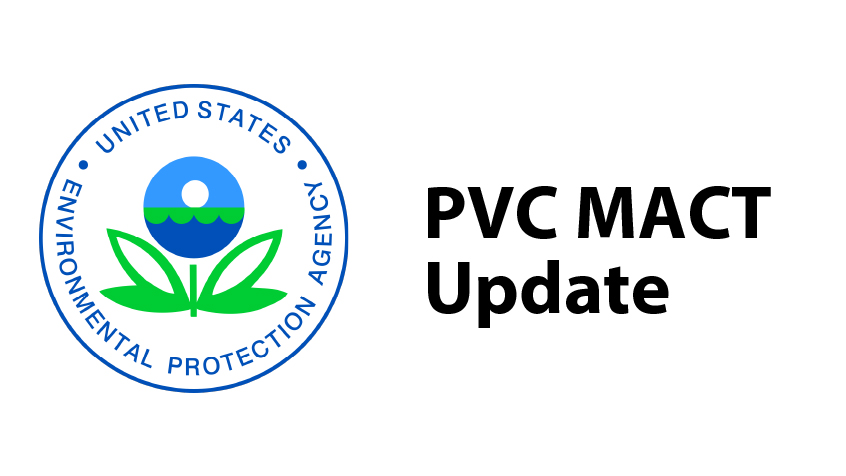This website uses cookies so that we can provide you with the best user experience possible. Cookie information is stored in your browser and performs functions such as recognising you when you return to our website and helping our team to understand which sections of the website you find most interesting and useful.
Press Room
EPA Publishes Reconsideration of PVC MACT Rule
Nov. 10, 2020
On October 16, 2020, U.S. Environmental Protection Agency (EPA) Administrator Andrew Wheeler signed a proposed rule adopting changes to the “National Emissions Standards for Hazardous Air Pollutants: Polyvinyl chloride and Copolymers Production” based on the Agency’s reconsideration of both industry and ENGO petitions. The pre-publication version became available on EPA’s website on Monday, October 19, 2020. The proposed rule was published in the Federal Register on November 9, 2020, which will trigger a 60-day public comment period.
This culminates an 8-year effort by the EPA and industry to complete the reconsideration of the rule that became effective in April 2012, a process that typically only takes three years.
The EPA’s action comports with the 1990 Clean Air Act requirements for implementing maximum achievable control technology (MACT) for control of hazardous air pollutants from U.S. manufacturing operations based on the best U.S. performers. All U.S. manufacturing industries are currently or will eventually be regulated under the 138 MACT rules now in effect. Development of the PVC MACT began in 1998 and the rule published in 2012 contained significant errors in the EPA’s limits determinations. Because of the lack of public comment availability on the EPA’s approach, the Agency agreed to formally reconsider the rule in September 2012.
The PVC MACT is one of the EPA’s most complex rules, since every phase of production is regulated in some manner to control hazardous air pollutant emissions to air, water, and products. From 2009 to 2020, the PVC industry has expended over $70 million and 12 person-years to provide information and data to the EPA in response to six separate data collection requests in order to develop a proper rule to regulate the PVC industry under. In addition to the information and data collection expenditures, individual facilities have invested millions of dollars to meet or perform better than the requirements of the 2012 rule.
Vinyl Institute (VI) members have long taken care to ensure the safety of the environment, its workers and communities and are committed to sustainable practices. All VI members are also members of the Vinyl Sustainability Council whose guiding principles promote continual improvement at facilities to reduce emissions, protect health and safety of workers, and enhance welfare of neighboring communities.


